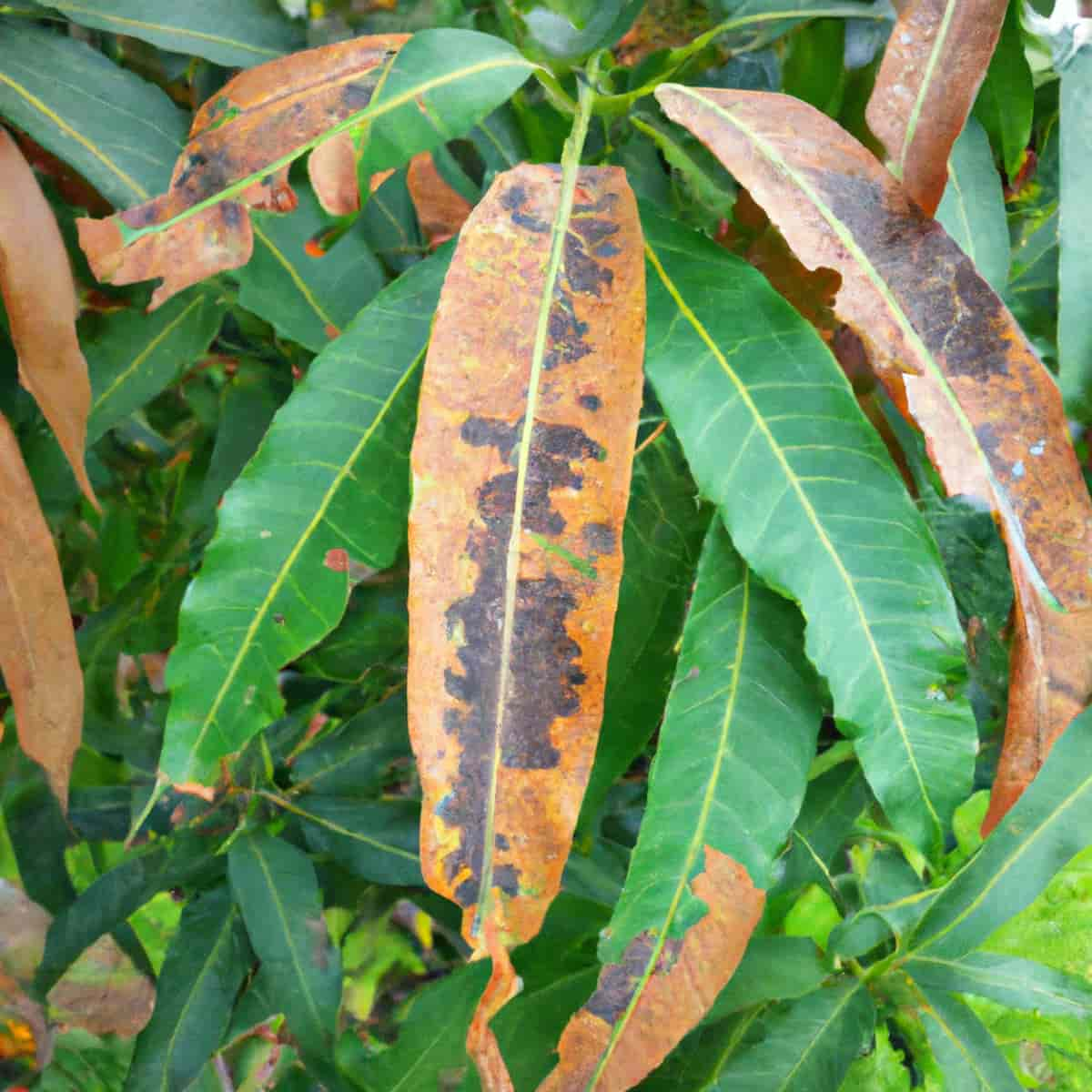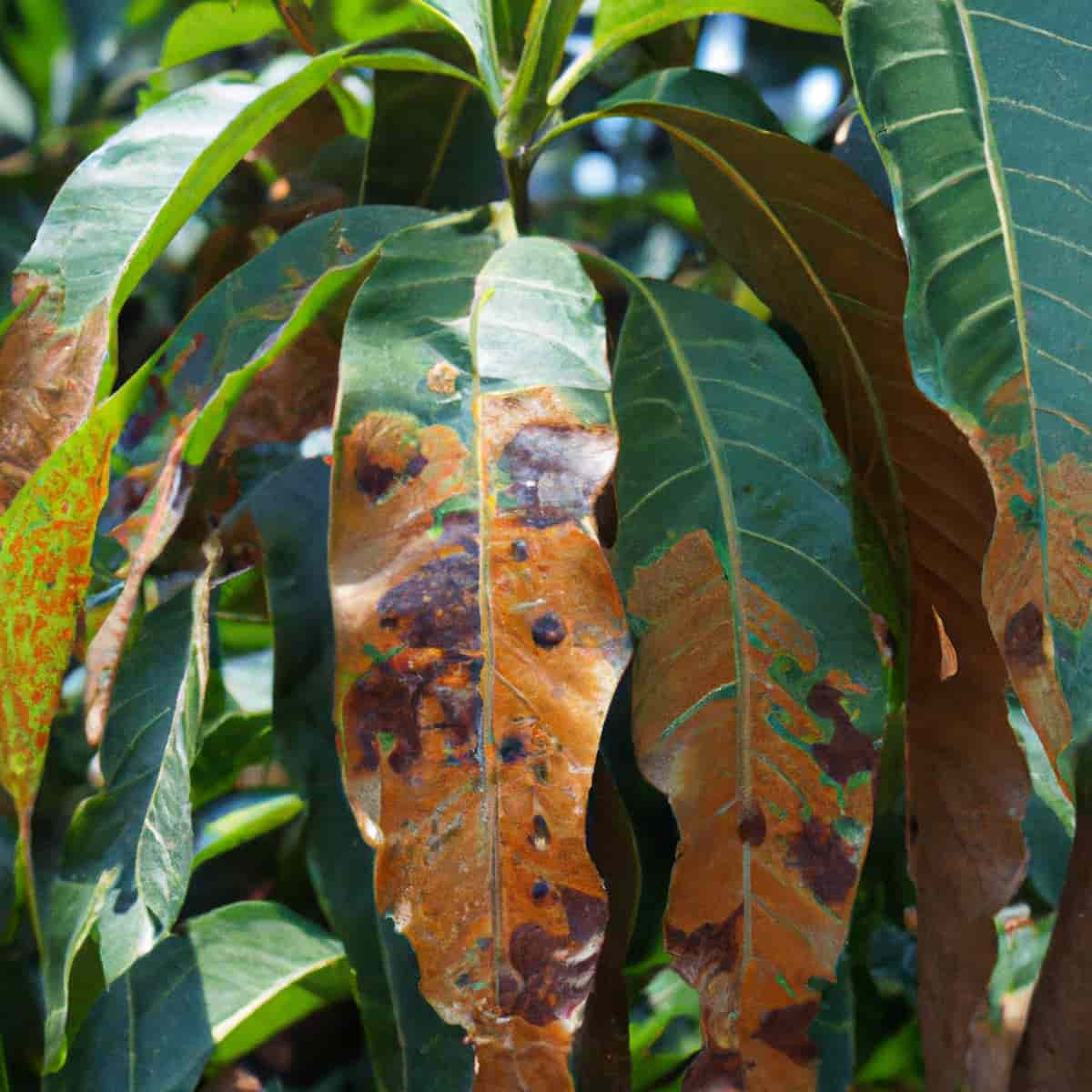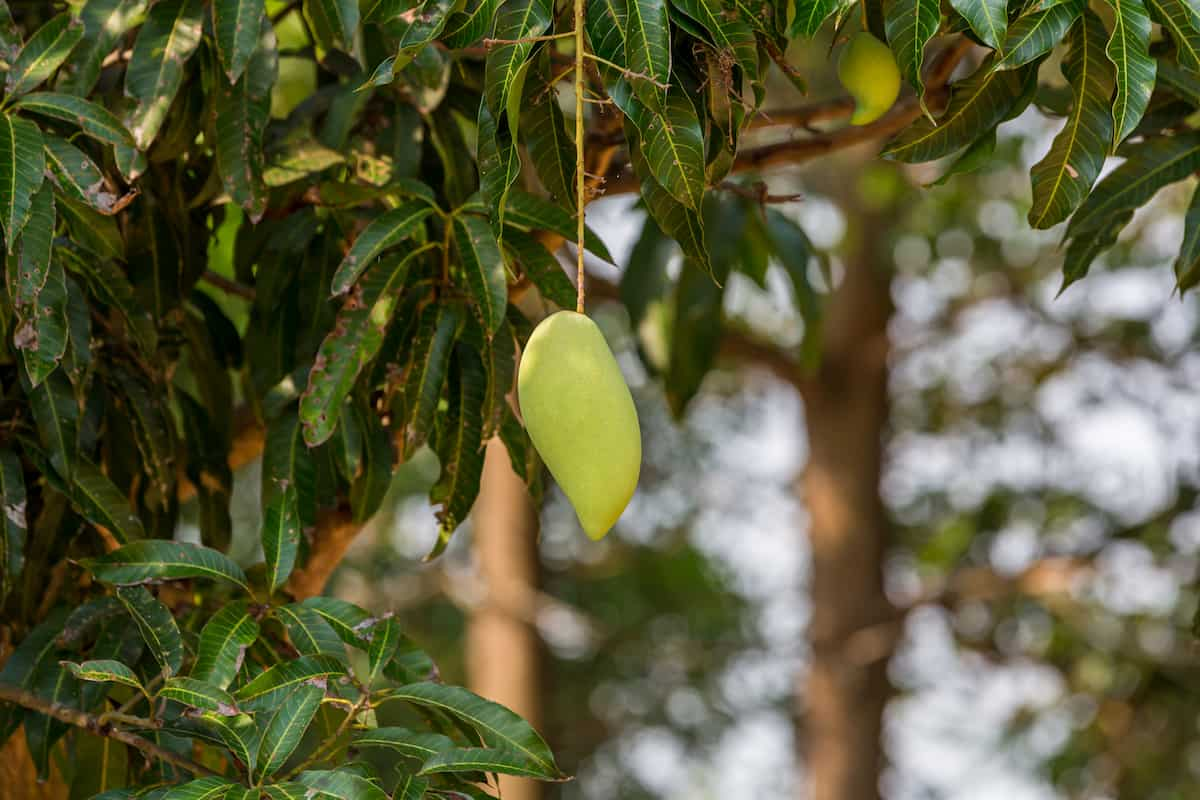The Mango Phoma Blight Disease caused by the fungus Peyronellaea glomerata, previously known as Phoma glomerata, is a devastating disease affecting worldwide mango crops. This disease can cause significant yield losses, affecting fruit quality and quantity. The Peyronellaea glomerata fungus overwinters in infected plant debris and soil and is spread by wind, rain, and contaminated pruning tools.

Mango Phoma blight can be managed through cultural practices such as proper sanitation, removal of infected plant debris, and use of disease-free planting material. Fungicides can also be used for disease control, but their effectiveness may vary depending on the disease development stage and the infection’s severity.
To effectively manage this disease, it is important to understand its disease cycle, the mode of disease spread, and the best methods for controlling it. This article will provide an overview and discussion of the Mango Phoma Blight Disease in Mango crops, including its symptoms, identification techniques, and control.
Mango Phoma Blight Disease Management
The Causal Organism of Mango Phoma Blight Disease
- Peyronellaea glomerata is a seed-borne fungus that belongs to the Family Phaeosphaeriaceae of Order Pleosporales of the Phylum Ascomycota.
- The fungus is characterized by small, black, irregularly-shaped, multicellular fruiting bodies called pycnidia, which are 0.1-0.2 mm in diameter, surrounded by a layer of hyphae, and release spores known as conidia.
- The conidia are hyaline and cylindrical or slightly curved. They have a single germ pore at one end and are typically produced in chains.
The Disease Cycle of Mango Phoma Blight Disease
The disease cycle of the Mango Phoma Blight Disease, Peyronellaea glomerata, in Mango Crops begins with overwintering the fungus in infected plant debris and soil. In the spring, when conditions become favorable, the fungus produces pycnidia, the fruiting bodies that contain the spores called conidia. The pycnidia appear as black, tiny, raised structures on infected plant tissues, such as leaves, stems, and fruit.
These pycnidia are scattered across the surface of infected plant tissues, such as leaves, stems, and fruit. The conidia are produced in chains within the pycnidia and are disseminated by wind, rain, and other means, causing new infections in healthy plant tissues. The conidia germinate and produce hyphae, which penetrate the plant tissues, causing infections. The fungus can infect all parts of the mango tree, including leaves, shoots, flowers, and fruit.
Once inside the plant tissues, the fungus produces mycelia, which grow and spread throughout the host. The mycelia produce enzymes that break down plant tissues, causing dark, sunken lesions on the infected tissues. These lesions produce spores and are released into the air, completing the disease cycle.
Occurrence of Mango Phoma Blight Disease in Mango Crop
- Location of Mango Phoma Blight disease: This disease occurs in mango crops in India, Africa, Bangladesh, Sri Lanka, Thailand, the Philippines, the United States, Mexico, Brazil, Ecuador, Peru, and Australia.
- Host range: The most common crops affected by Peyronellaea glomerata are mango, avocado, papaya, guava, cucumber, tomato, pepper, olive, grape, and grapevine.
In case you missed it: Mango Bacterial Canker Disease Management: Symptoms, Treatment, Chemical, Biological, and Organic Control

Favorable Conditions for Mango Phoma Blight Disease Spread in the Field
- Warm and humid conditions, with temperatures between 25-35°C and more than 90% relative humidity, and heavy rainfalls are ideal for fungal growth.
- High rainfall or irrigation, coupled with poor drainage, can create saturated conditions in the soil, providing an optimal environment for the fungus to grow and infect the plant.
- Due to poor sanitation practices, the presence of weeds, debris, or fallen fruits in or around the orchard can create a breeding ground for the fungus, spreading the disease.
- Plant stresses on the mango plant, such as nutrient deficiency, drought, or insect infestation, can weaken the plant’s defenses and make it more susceptible to infection by the fungus.
- Presence of alternative hosts like Vine and Kentucky grass can spread the disease. The fungus can survive on fruits, glumes, and plant debris.
Damage Symptoms of Mango Phoma Blight Disease
- Mango Phoma blight is characterized by the appearance of dark, sunken lesions on leaves, stems, and fruit, which can ultimately lead to defoliation and fruit drop.
- The symptoms of this disease are observed only on older leaves. The affected leaves show small, angular, yellow to brown, irregular lesions scattered over the entire leaf lamina.
- As the disease develops, the lesions enlarge and coalesce to form larger patches, turning from brown to cinnamon necrotic lesions with grey centers and dark margins.
- Ultimately, the affected leaves wither, and defoliation occurs on a massive scale.
Percentage of Yield Loss Due to Mango Phoma Blight Disease in Mango Crop
- The disease can cause 50% yield losses in the United States. In Mexico, yield losses are 20-50%. In India, the yield losses range between 20-60%. In Bangladesh, the losses are 30-70%. In China, a 40% yield loss is seen.
- In Africa, yield losses are between 20-50%. In the Philippines, Thailand, and Indonesia, it is 10-40%. In Brazil, it is between 30-60%. In Australia, the losses are 50%. The Economic Threshold Level is determined at 10-15% of affected leaves.
Cultural Control Measures of Mango Phoma Blight Disease
- Infected plant debris should be collected and destroyed to reduce the inoculum potential; this includes fallen leaves, twigs, and infected fruit. Proper disposal is essential to prevent the disease’s spread to healthy plants.
- Pruning can help increase air circulation and reduce humidity, inhibiting the fungus’s growth and spread.
- Overhead irrigation should be avoided, and drip irrigation or other localized irrigation should be used to prevent wetting the foliage and reduce humidity.
- Overfertilization with nitrogen can promote excessive vegetative growth, making the plant more susceptible to disease. Mango trees require an adequate and balanced nutrient supply to enhance their disease resistance.
- Crop Rotation involves growing non-host crops in the same field for several years before reintroducing mangoes to reduce the pathogen’s buildup in the soil.
Biological Control Measures of Mango Phoma Blight Disease
- Trichoderma spp. are beneficial fungi that colonize the root system, promote plant growth, and produce enzymes that break down the cell walls of fungal pathogens, preventing their growth and colonization of plant tissues.
- Bacillus spp. are beneficial bacteria that produce antibiotics and enzymes that can inhibit the growth and colonization of fungal pathogens.
- Mycorrhizal fungi can enhance plant nutrient uptake and increase root system development, improving plant health and resistance to fungal pathogens.
Chemical Control Measures of Mango Phoma Blight Disease
- Spray Carbendazim immediately after noticing the disease, followed by Copper Oxychloride at 14-day intervals to control the fungus spread.
- Prune the diseased leaves and Spray Miltox at 20-day intervals to control the phoma blight disease.
Organic Control Measures of Mango Phoma Blight Disease
- Biopesticides are microbial or plant-based products that can be used to control the disease. Some biopesticides are formulated with beneficial microbes or plant extracts with antifungal properties, making them effective against Peyronellaea glomerata.
- Plant extracts, such as extracts from neem, ginger, and turmeric leaves, are used as a foliar spray or soil drench to manage the disease.
- Neem oil, Garlic extract, and Copper-based fungicides are applied as a foliar spray or incorporated into the soil to control the disease.
- Collect the diseased leaves and debris from the orchard and burn them far away from the field to control the disease spread.
Preventive Measures for Control of Mango Phoma Blight Disease
- Remove alternate hosts, Kentucky grass and Vine plants, from the field to reduce the disease incidence.
- Regularly monitoring the crops for signs of disease will help to find and manage the disease early before it spreads.
- Always use sterilized and disinfected pruning tools and equipment to prevent the spread of the disease to new trees.
- Select the planting materials from disease-free and healthy trees.
In case you missed it: Mango Dieback Disease Management: Symptoms, Treatment, Chemical, Biological, Natural, and Organic Control

Conclusion
The Mango Phoma Blight Disease caused by Peyronellaea glomerata is a significant threat to mango crops, causing significant yield losses worldwide. Integrated disease management approaches are crucial to controlling and minimizing economic losses. These approaches include a combination of preventive measures such as sanitation and crop rotation, cultural practices, biological control, chemical control, planting resistant cultivars, and monitoring. Overall, an integrated approach is most effective in managing the disease in Mango Crops.
- Beneficial Insects in Pest Management
- Natural Solutions for Pest Control in Flower Gardens
- Types of Fungicides Used in Agriculture
- Common Issues in the Fruit Development Stage of Pomegranate Farming
- Fruit Development Issues in Papaya: Easy Solutions and Treatment
- Soil-Borne Diseases and How to Protect Your Plants
- Practices to Prevent Disease Spread in the Garden
- From Wilted to Thriving: How to Treat Root Rot Naturally in Houseplants
- Natural Remedies to Cure Brown Spots on Fig Tree Leaves